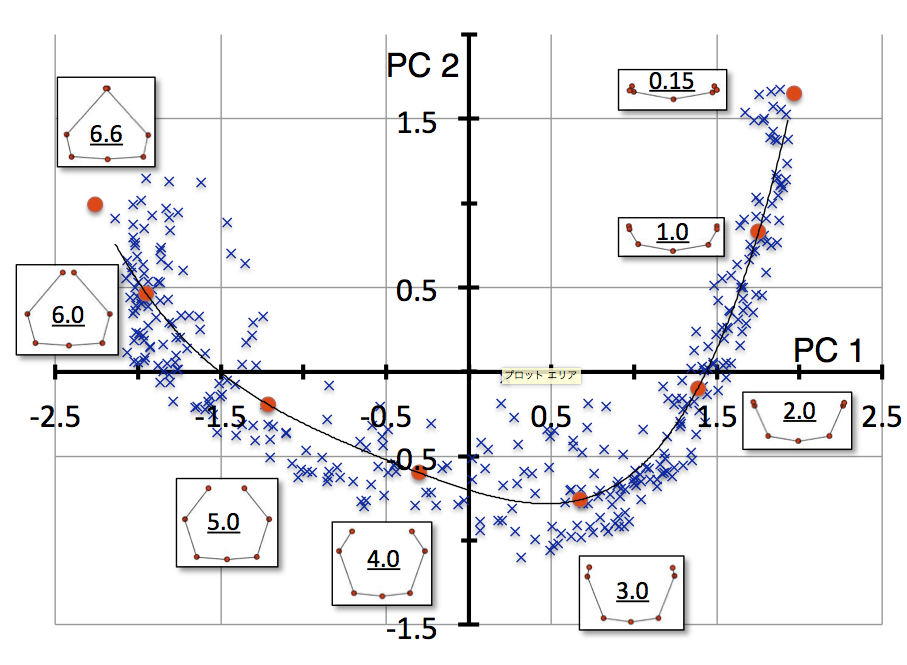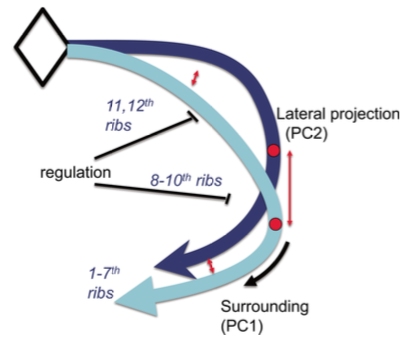
奥野さんの卒業研究がDevelopmental Dynamicsに受諾されました。
- 肋骨対の3次元座標を用いて主成分分析を行いました。
- 各肋骨対の PC1 および PC2 値の位置は、発生に伴い適合曲線に沿って移動した、
- PC1 と PC2 の変化は、近似曲線を形状の線形スケールとして使用する単一のパラメーターで表すことが可能
- 形態形成時の肋骨の形態は少数の限られた因子で制御されている可能性を示した。(parsimonious modelの提唱)
40. Matsubayashi J, Okuno K, Fuji S, Ishizu K, Yamada S, Yoneyama A, Takakuwa T. Human embryonic ribs all progress through common morphological forms irrespective of their position on the axis, Dev Dyn 2019, 248, 1257-1263, doi: 10.1002/dvdy.107

Abstract
Background
We aimed to analyze the morphogenesis of all ribs from 1st to 12th rib pairs plus vertebrae to compare their differences and features according to the position along the cranial-caudal axis during the human embryonic period.
Results
Rib pair formation was analyzed using high-resolution digitalized imaging data (n = 29) between Carnegie stage (CS) 18 and CS23 (corresponding to ED13-14 in mouse; HH29-35 in chick). A total of 348 rib pairs, from 1st to 12th rib pairs of each sample were subjected to Procrustes and principal component (PC) analyses. PC1 and PC2 accounted for 76.3% and 16.4% (total 92.7%) of the total variance, respectively, indicating that two components mainly accounted for the change in shape. The distribution of PC1 and PC2 values for each rib showed a “fishhook-like shape” upon fitting to a quartic equation. PC1 and PC2 value position for each rib pair moved along the fitted curve according to the development. Thus, the change in PC1 and PC2 could be expressed by a single parameter using a fitted curve as a linear scale for shape.
Conclusion
Human embryonic ribs all progress through common morphological forms irrespective of their position on the axis.







